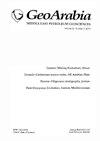Late Oligocene–Early Miocene Nukhul Sequence, Gulf of Suez and Red Sea
引用次数: 18
Abstract
Egypt’s Late Oligocene–Early Miocene Nukhul Formation was deposited during the earliest geological evolution of the Gulf of Suez and Red Sea Rift System. In this paper the formation is cast as a depositional sequence based on published sections, and correlated across the Gulf of Suez and northern Red Sea. The resulting correlations indicate that deposition was initiated in local grabens by the oldest continental clastics of the lower member of the Nukhul Formation, the Shoab Ali Member. The member overlies the Suez Rift Unconformity, a term proposed for the entire Red Sea. Although this member can attain a thickness of ca. 1,000 ft (305 m) locally in grabens, it is generally absent over horsts. Sedimentary facies of the member are interpreted as indicating an initial alluvial-fluvial setting that evolved to an estuarine and coastal setting. The upper part of the Nukhul Formation records a regional shallow-marine transgression, which can be subdivided into three correlative Upper Nukhul members. These sediments are absent over the highest paleo-horsts, but reach up to 900 ft (275 m) in thickness in grabens. In the southern Gulf of Suez the Ghara Member represents the Upper Nukhul members. In places it consists of four cycles, each of which starts with an anhydrite bed and is overlain by deposits of mixed lithology (sandstone, marl, and limestone). The four cycles are interpreted as transgressive-regressive subsequences that can be correlated across ca. 60 km in the Gulf of Suez. The Ghara Member correlates to Saudi Arabia’s Yanbu Formation, which consists of massive salt in wells drilled on the Red Sea coastal plains. The Yanbu Salt is dated by strontium-isotope analysis at ca. 23.1–21.6 Ma (earliest Aquitanian). The Nukhul Formation is capped by the Sub-Rudeis Unconformity or correlative Rudeis Sequence Boundary, and overlain by the Rudeis Formation. The Nukhul Formation is here proposed as the Nukhul Sequence and defined in the Wadi Dib-1 Well, wherein it consists of Nukhul subsequences 1 to 10 (in descending order, ranging in thickness between 33–84 m). The lower six Nukhul subsequences 10 to 5 are characterized by shale-to-sandstone cycles of the Shoab Ali Member, and the upper four are represented by the cycles of the Ghara Member. The 10 subsequences are interpreted as tracking the 405,000 year eccentricity signal of the Earth’s orbit and to span ca. 4.0 million years between ca. 25.0 and 21.0 Ma.晚渐新世-早中新世Nukhul层序,苏伊斯湾和红海
埃及晚渐新世-早中新世Nukhul组沉积于苏伊斯湾和红海裂谷系最早的地质演化时期。本文以已发表剖面为基础,将该地层作为一个沉积层序,并与苏伊士湾和红海北部进行对比。结果表明,沉积是由Nukhul组下段(Shoab Ali组)最古老的大陆碎屑在局部地堑中开始的。该成员位于苏伊士裂谷不整合上,这是对整个红海的称呼。虽然在地堑的局部区域它的厚度可以达到约1000英尺(305米),但在地垒上它通常不存在。该段的沉积相被解释为表明最初的冲积-河流环境演变为河口和海岸环境。Nukhul组上部为区域性浅海海侵,可划分为三个相互关联的上Nukhul段。这些沉积物在最高的古地垒上不存在,但在地堑中厚度可达900英尺(275米)。在苏伊士湾南部,哈拉成员代表上努库尔成员。在某些地方,它由四个旋回组成,每个旋回都始于硬石膏层,并被混合岩性(砂岩、泥灰岩和石灰岩)沉积物覆盖。这四个旋回被解释为海侵-海退子序列,可以在苏伊士湾的60公里范围内相互关联。Ghara成员与沙特阿拉伯的Yanbu组有关,该组由红海沿岸平原上钻探的井中的大量盐组成。盐部盐的锶同位素测定年代约为23.1 ~ 21.6 Ma(最早的阿基坦期)。Nukhul组被次鲁德斯不整合面或相关的鲁德斯层序边界盖住,并被鲁德斯组覆盖。本文提出Nukhul组为Nukhul层序,在Wadi Dib-1井中定义为Nukhul组,由Nukhul子层序1 ~ 10(厚度从大到小,在33 ~ 84 m之间)组成,下6个Nukhul子层序10 ~ 5为Shoab Ali段的页岩-砂岩旋回,上4个为Ghara段的旋回。这10个序列被解释为跟踪地球轨道40.5万年的偏心率信号,并在约25.0至21.0 Ma之间跨越约400万年。
本文章由计算机程序翻译,如有差异,请以英文原文为准。
求助全文
约1分钟内获得全文
求助全文
来源期刊

Geoarabia
地学-地球科学综合
自引率
0.00%
发文量
0
审稿时长
>12 weeks
期刊介绍:
Cessation. Published from 1996 to 2015, GeoArabia, The Journal of the Middle Eastern Geosciences was a quarterly journal covering the petroleum geosciences in the Middle East. The journal covers subjects such as: - sedimentology - tectonics - geophysics - petroleum reservoir characterization
 求助内容:
求助内容: 应助结果提醒方式:
应助结果提醒方式:


